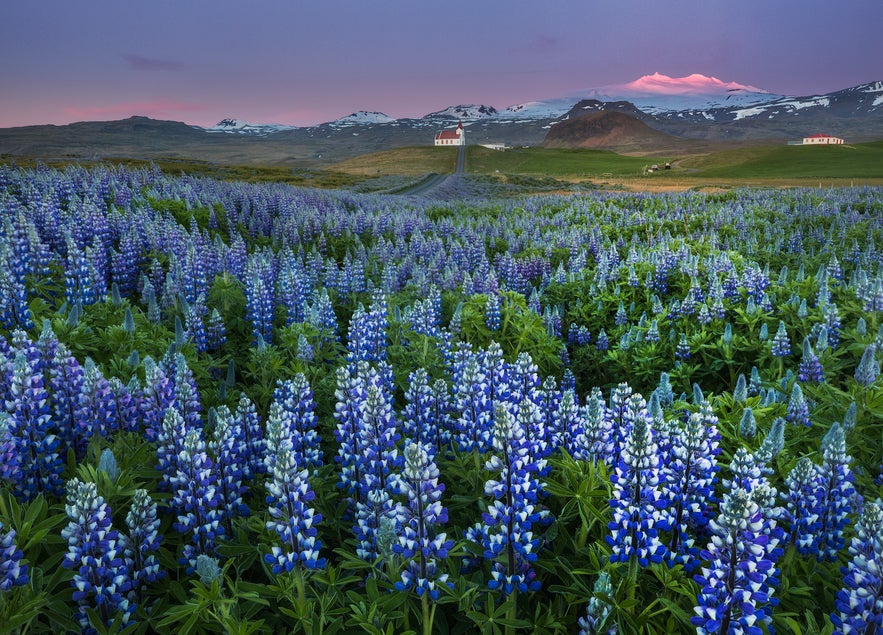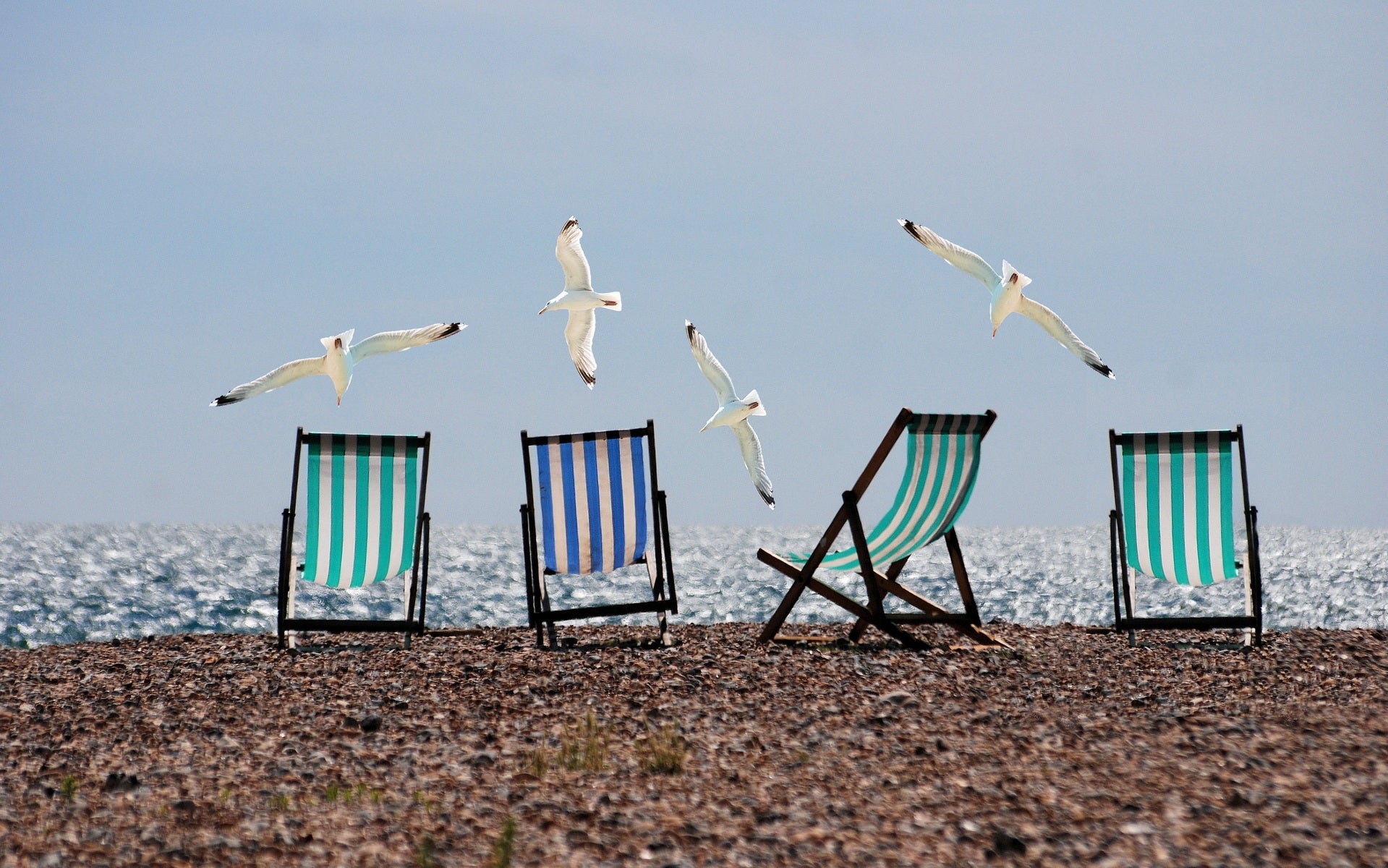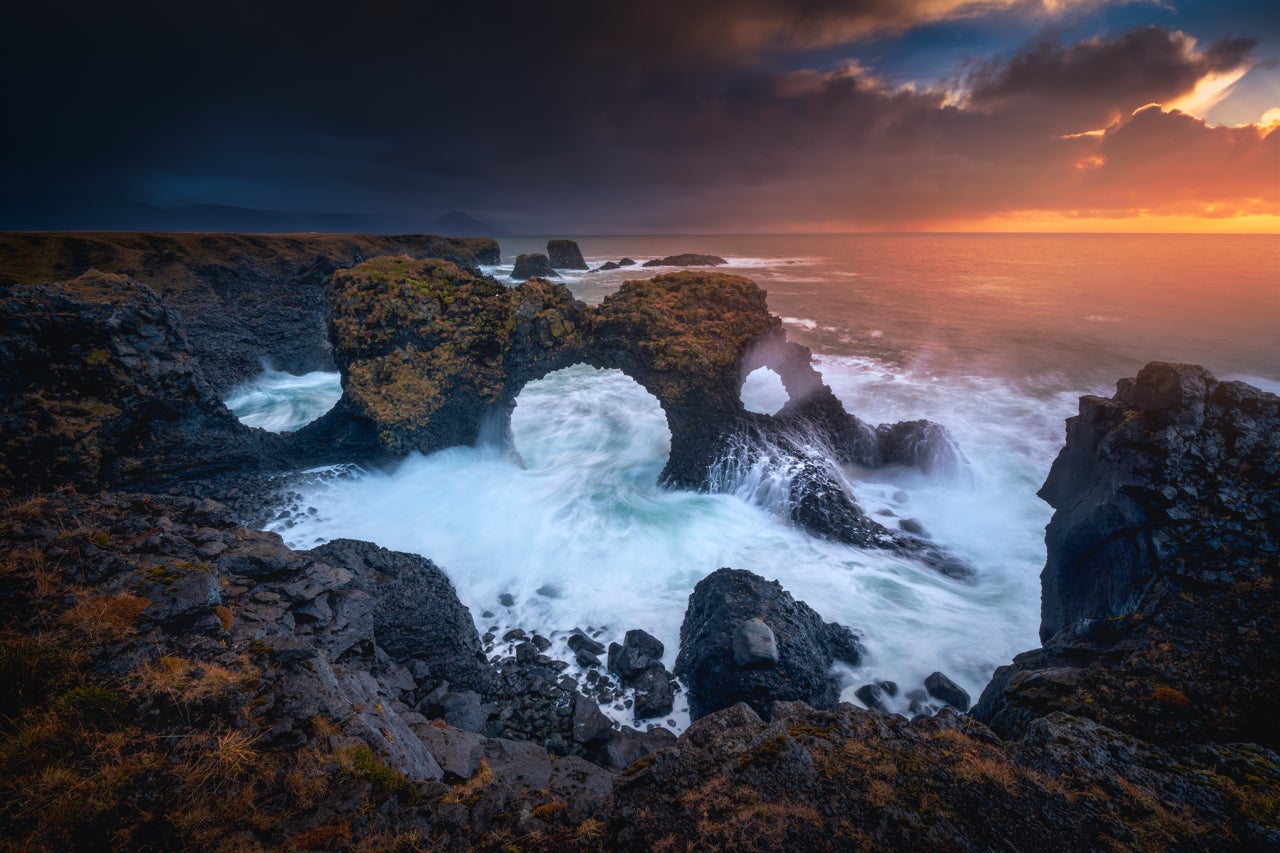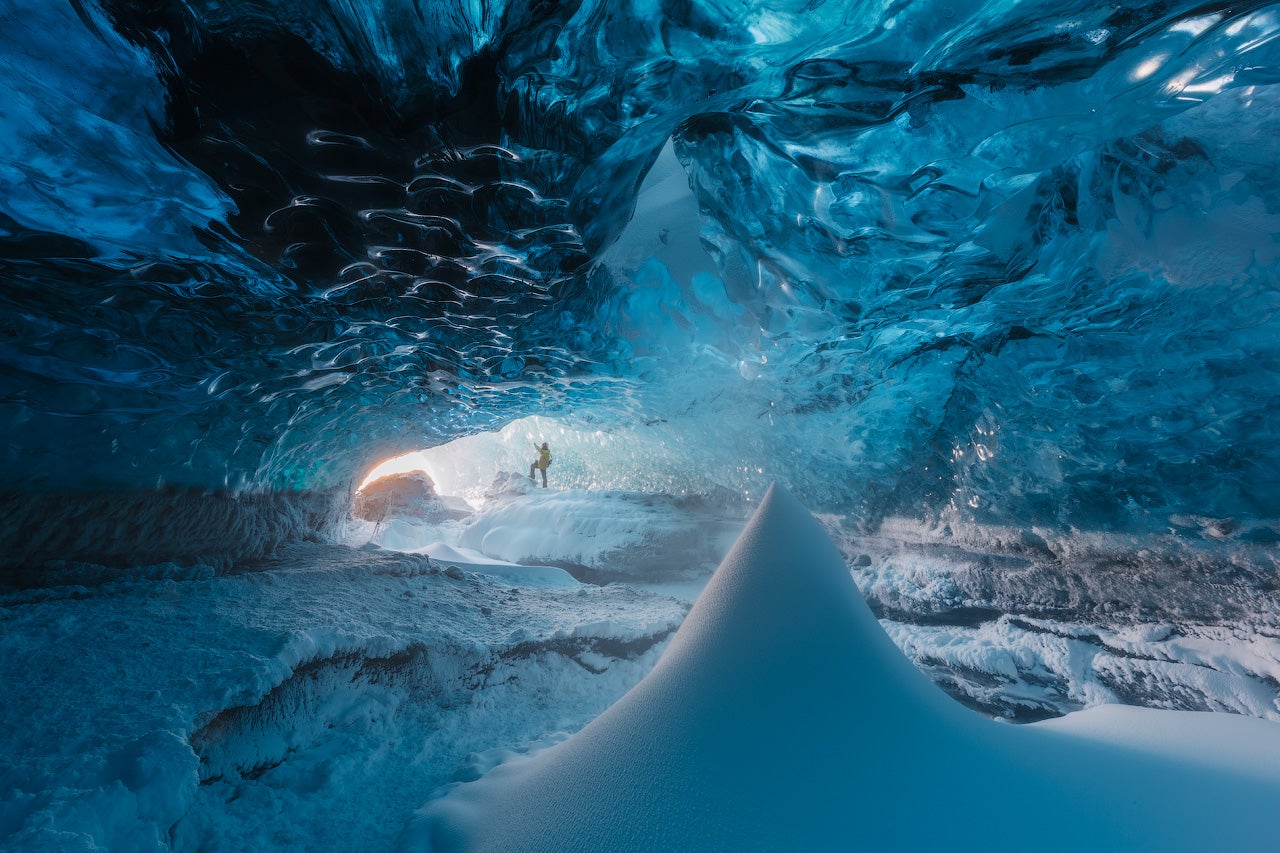
When you travel to Iceland, you might expect to see awe-inspiring glaciers and glorious waterfalls, vast expanses of lava fields, flowing rivers and miles upon miles of snow-capped mountains. What you might not expect though is wildflowers… lots and lots of them!
- Explore The Best Time to Visit Iceland for Photography
- Join us on this 11 Day Iceland in Autumn Photography Workshop
During spring and summer, Iceland becomes a photographer’s delight, carpeted in a myriad of blossoming colours beneath your feet. So if you’re keen to photograph the blooming wildflowers in Iceland, read on to find out exactly when and where to find them!
Nootka Lupine
 Purple lupines growing on the south coast of Iceland. Photo by: 'Iurie Belegurschi'.
Purple lupines growing on the south coast of Iceland. Photo by: 'Iurie Belegurschi'.
If you are taking a summer photography workshop, then perhaps the most common and controversial wildflower that you will see throughout much of Iceland is the nootka lupine, otherwise known as the Alaskan lupine. The Icelandic name for this species of flower is Lúpína.
You’ll be able to spot large fields of this vibrant purple flower carpeting areas all throughout Iceland. Though the purple lupine appears to flower quite naturally within the Icelandic landscape, it is not a native plant. In fact, lupines were introduced in 1945 to lowland areas in the southwest as a means of adding nitrogen to the soil.
Since that time, the lupine has flourished, spreading like wildfire to other parts of Iceland, sometimes at the detriment of other flora. As such, some people view the lupine as an invasive species that is threatening to delicate mosses, lichen and other native plants. However, it also has the more positive history of being used for healing purposes in Icelandic medicine.
 Fields of purple lupines overlooking the church in Vík. Photo by: 'Iurie Belegurschi'.
Fields of purple lupines overlooking the church in Vík. Photo by: 'Iurie Belegurschi'.
For the best chances at photographing fields of lupines, visit Iceland during the summer months of June and July. During this period, they will be in bloom and visible almost everywhere throughout the country, particularly alongside roads, around lakes and near the coast.
To create a truly enchanting photo, head towards the south, where you will be able to capture the lupines in all their beauty at the base of the famous white church, Víkurkirkja. The church is situated above the village of Vík, offering some very nice views of the village itself with the ocean and mountains all around.
- See also: Private Multi Day Tours
 Pink and purple lupines at the base of Mount Vestrahorn in Iceland's south west. Photo by: 'Iurie Belegurschi'.
Pink and purple lupines at the base of Mount Vestrahorn in Iceland's south west. Photo by: 'Iurie Belegurschi'.
You can also find these pretty purple flowers blooming all around Mt Vestrahorn in Iceland’s south west.
Harebell
Harebells, known in Icelandic as Bláklukka (bluebells) and by their scientific name Campanula rotundifolia, may be found commonly in the east of Iceland but are rarely seen elsewhere. You will often find them growing in low grasslands from Thistilfjörður south to the area around the Skeiðará river.
These beautiful wildflowers are easily recognisable by their blue or purple coloured bell-shaped heads. The petals are coarse and the stem leaves are often heart-shaped.
 Harebells at the base of Lomagnupur in the south east of Iceland. Photo by: 'Kaspars Dzenis'.
Harebells at the base of Lomagnupur in the south east of Iceland. Photo by: 'Kaspars Dzenis'.
Throughout the later months of summer in July and August, you will see them flowering around the 688 metre tall Lómagnúpur, which is one of Iceland’s most recognisable mountains in the south east. With its dramatic cliff face and the open blue fjord at its base, this mountain provides the perfect backdrop for the wild bluebells that carpet the foreground.
Cotton Grass
Cotton grass is a type of flowering plant that can be found throughout the arctic, subarctic and temperate portions of the northern hemisphere in acid bog habitats. The Icelandic name of this species of flower is Klófífa. It is particularly abundant all around Iceland throughout the seasons, growing mostly in wet areas such as marshes, meadows, by ponds and lakes, on riverbanks, in moist gravel or in wet sand. It can also be found growing alongside roads in Iceland and even in ditches.
While cotton grass can appear to be a rather dull plant during winter and spring, it becomes simply breathtaking in summer and autumn – the period between June to October – when it blossoms with wispy, bright white or silvery bristles up to 3 centimetres long.
 Cotton grass flourishes within Landmannalaugar in the Icelandic Highlands. Photo by: 'Kaspars Dzenis'.
Cotton grass flourishes within Landmannalaugar in the Icelandic Highlands. Photo by: 'Kaspars Dzenis'.
For truly mesmerising photo opportunities of cotton grass, head towards the Westfjords in Iceland’s north-east or the wetlands of Landmannalaugar in the Icelandic Highlands, where you will be able to frame these cottony flowers with farmhouses in the distance or spectacular mountains in the background.
- See also: Landmannalaugar Photography Day Tour
Mountain Avens
Mountain avens, known in Icelandic as Holtasóley, is the country’s national flower. It has a long history of being used for its medicinal properties to reduce inflammation. Its leaves can also be dried and used for tobacco and tea.
Long ago, these pretty little flowers were once described as “Thief’s Root”, as they tended to grow in abundance where thieves were hung. According to folklore, they also have the power to double your wealth, but only if you steal money from a poor widow and then bury it beneath the flowers.
Mountain avens are quite conspicuous, growing mainly in gravel on mountain slopes and in moorland, where the snow melts early following the winter period. The flowers are typically characterised by 8 creamy white petals on stalks anywhere from 3-8 centimetres long.
 Mountain avens at the powerful Dettifoss waterfall in north east Iceland. Photo by: 'Iurie Belegurschi'.
Mountain avens at the powerful Dettifoss waterfall in north east Iceland. Photo by: 'Iurie Belegurschi'.
For the most beautiful photographic opportunities of mountain avens, head to Dettifoss waterfall in the Vatnajökull National Park in northeast Iceland during the months of June and July. Here, you will be able to capture these gorgeous blossoms alongside a long-exposure taken by the top of the waterfall, before the water plunges over the edge.
Meadow Buttercups
 Meadow buttercups at Arnarstapi on the Snaefellsnes Peninsula in Iceland. Photo by: 'Kaspars Dzenis'.
Meadow buttercups at Arnarstapi on the Snaefellsnes Peninsula in Iceland. Photo by: 'Kaspars Dzenis'.
The meadow buttercup is a perennial plant that grows up to 1 metre tall in meadows situated in the lowlands, as well as in beds of snow in the Highlands of Iceland. The Icelandic name of this species is Brennisóley.
Meadow buttercups bloom in Iceland during summer from May to July. The plant itself is hairy, with flowing stems that bear glossy, yellow flowers about 25 millimetres across with 5 overlapping yellow petals.
 Meadow buttercups dot the windswept landscapes of the Snaefellsnes Peninsula. Photo by: 'Iurie Belegurschi'.
Meadow buttercups dot the windswept landscapes of the Snaefellsnes Peninsula. Photo by: 'Iurie Belegurschi'.
These flowers are quite rare in Iceland, though you will be able to find them tucked away in clandestine locations all along the Snæfellsnes Peninsula. This region in western Iceland is known for its dramatic landscapes, surrounded by lava fields and dotted with cute fishing villages.
 You can even find buttercups at Kirkjufell. Photo by: 'Iurie Belegurschi'.
You can even find buttercups at Kirkjufell. Photo by: 'Iurie Belegurschi'.
For the best photo opportunities of meadow buttercups in Iceland, try capturing them at the base of the famous Church Mountain, otherwise known as Kirkjufell. This distinctly shaped mountain can be found on the north coast of the Snæfellsnes Peninsula, only a short distance away from the town of Grundarfjörður.
You will also be able to find meadow buttercups nearby at Arnarstapi, a small fishing village at the foot of Mt. Stapafell between Hellnar village and Breiðavík farms on the southern side of Snæfellsnes. Here, they grow on the basalt arch known as Gatklettur, which stands between the beach and the sea.
 Buttercups carpet the foreground at Seljalandsfoss on the south coast of Iceland. Photo by: 'Iurie Belegurschi'.
Buttercups carpet the foreground at Seljalandsfoss on the south coast of Iceland. Photo by: 'Iurie Belegurschi'.
Another magical place that you’ll be able to photograph meadow buttercups in Iceland is at Seljalandsfoss, one of the best-known waterfalls in Iceland. Close to the Ring Road, this waterfall features a cavern behind it, allowing visitors to walk in a complete circle around the cascades.
Moss Campion
 Moss campion. Photo by: 'Björn S, Wikimedia Commons'.
Moss campion. Photo by: 'Björn S, Wikimedia Commons'.
Moss campion is an herbaceous perennial mountain-dwelling wildflower that is common all over the tundra in the higher mountains of Iceland. Its Icelandic name is Lambagras. The plant itself most often grows in dry soil from regions near the coast to the desert sands of the Icelandic Highlands.
In the past, moss campion has been used as a source of food in Iceland, as its leaves are quite fleshy and succulent. You will be able recognise it easily, with its hemispherically-shaped tiny pink flowers, which have a yellow band at the base of the petals. The flowers may also very occasionally be white.
The best time to photograph moss campion is early in the summer from May to June, when the snow has melted. Between August and September, the number of flowers begins to decline.
To find moss campion in the wild, head to the Westfjords in Iceland’s north-west, where you will be able to frame them beautifully with the coastline in the background.
On the other hand, you can also find them dotted around the surreal landscape of the Víti crater near Lake Mývatn in the north. Formed in 1724 by a massive eruption in the Krafla volcano, the huge explosion crater of Víti is around 300 metres in diameter. The aqua blue lake inside it makes for a great subject in landscape photography, particularly when there is a crop of pretty pink moss campion in the foreground.
Angelica
 Angelica grows around Skogafoss waterfall. Photo by: 'Moniquegennotte, Pixabay'.
Angelica grows around Skogafoss waterfall. Photo by: 'Moniquegennotte, Pixabay'.
Angelica is one of Iceland’s most cherished medicinal herbs, and is one of only a few plants that survived the last Ice Age. The Icelandic name for it is Ætihvönn. It has been used in Iceland as a herbal medicine since the country’s settlement more than 1100 years ago and has been written about in many ancient texts, including one of Iceland’s most famous Sagas, where the hero held onto an angelica plant for his life whilst dangling over a tall cliff.
Nearly every farm in Iceland has a special angelica garden in which farmers are able to grow the herb. There are also many places in Iceland that have been named after it, such as Iceland’s highest peak in Vatnajökull National Park, Hvannadalshnjúkur (which translates to ‘Angelica Valley Peak’) and Hvanngil, a gorge in west Iceland. The microbrewery Bruggsmidjan at Árskógssandur in Eyjafjördur also has a brand of beer, Stinningskaldi, which is brewed from the angelica that grows on Hrísey island.
Angelica is quite a common plant in Iceland and can be found most often along creeks and rivers. It grows both in the lowlands and highlands, with large green flowers that are characteristically spherical in nature. Unlike the other flowers mentioned here, angelica is at its prettiest during autumn in Iceland, from the months of August until September.
 Angelica grows thickly around Skogafoss waterfall. Photo by: 'Iurie Belegurschi'.
Angelica grows thickly around Skogafoss waterfall. Photo by: 'Iurie Belegurschi'.
To photograph angelica flowers, all you’ll need to do is to explore the black sand beaches and grassy headlands of Vík in Iceland’s south, including the area around the mighty Skógafoss waterfall.
Now that you’ve got the lowdown on when and where to photograph wildflowers in Iceland, you’ll be well on your way to capturing breathtaking photos of the landscape in bloom! It's just a matter of planning out where you want to go and getting there at the right time to see the flowers at their prime.
Of course, there are many more wildflowers in Iceland that haven't been mentioned in this article. Have you photographed a particular wildflower in Iceland that you'd like to share? Leave a comment for us below!
About the author: Serena Dzenis is a landscape photographer based in Iceland. You can find more of her work on her website or by following her on Facebook and Instagram.
Would you like to go hunting for wildflowers on a fully-tailored photography workshop? Check out our private tours in Iceland, which are designed completely with you in mind!












